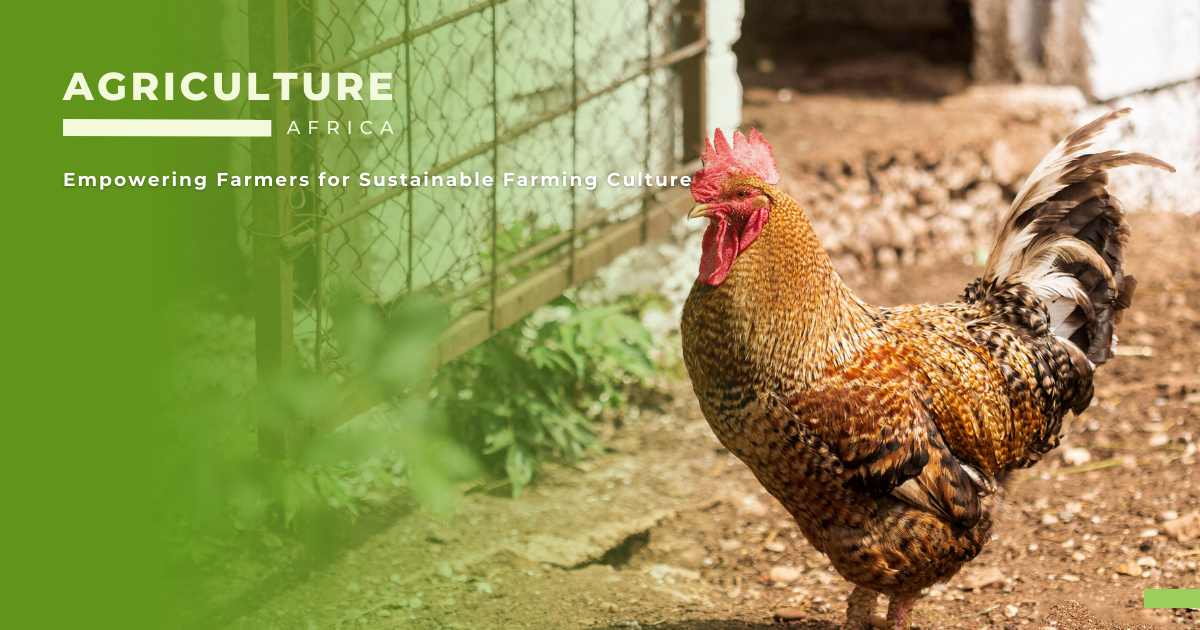Empowering African Farmers for Sustainable Farming Culture

Learn about the Poultry Health and Productivity Factors, Types, and Management Practises. Proper poultry housing is critical for bird comfort, safety, and well-being. Learn about the most important characteristics, types, and management practises for optimal poultry health and productivity.
The design and maintenance of poultry housing is critical to the health and productivity of poultry. Proper housing is critical for the birds’ comfort, safety, and well-being. We will address the issues that farmers must consider while planning and managing chicken housing, such as ventilation, lighting, temperature management, and biosecurity precautions, in this post.
Proper ventilation in poultry housing is critical because it removes excess moisture, gases, and odours while also providing fresh air for the birds to breathe. It also aids in temperature regulation and the prevention of the growth of dangerous germs and diseases. Natural ventilation and mechanical ventilation are the two types of ventilation systems.
Natural ventilation is accomplished by moving air via openings such as windows, doors, and vents. This technology is primarily employed in smaller buildings, and the direction of the building is critical for optimal airflow.
Mechanical ventilation regulates temperature and airflow through fans, heaters, and controllers. This technology is often employed in larger chicken operations and gives greater environmental control.
Adequate lighting is critical for the health and production of chickens. The amount of light required varies according to the birds’ age and breed. Light promotes egg production, aids in growth and development, and influences behaviour. It also aids in the regulation of circadian rhythms, which are critical for overall health and well-being.
Poultry are temperature sensitive, so it’s critical to keep them in a pleasant and consistent environment. The ideal temperature range for poultry is 65-75°F. Temperatures over this range can cause stress in birds, resulting in lower productivity and greater susceptibility to disease. Heaters, cooling systems, and insulation are all strategies for keeping the temperature stable.
Biosecurity is essential in poultry farms to prevent disease entry and transmission. It entails putting in place processes to decrease the risk of disease transmission, such as restricting access to the facility, sanitising equipment, and putting in place sanitation protocols. Personal protection equipment (PPE) such as boots, coveralls, and gloves are also vital in preventing disease spread.

Birds in free-range housing have access to the outdoors, allowing them to engage in natural behaviours such as scratching, foraging, and dust-bathing. This sort of house requires a lot of space, and the birds are exposed to natural elements like predators and weather. It is critical to rotate pasture and keep living places clean and dry to prevent illness transmission.
Cage-free housing offers greater space to birds than traditional cage systems, allowing them to walk about and display natural behaviours. Perches, nests, and litter for foraging and dust-bathing are common features of this sort of habitation. Cage-free living also necessitates strong biosecurity measures to avoid disease transmission, and regular cleaning and disinfection are required to maintain a healthy habitat.
The most prevalent type of housing utilised in commercial poultry farms is conventional cage housing. This system typically consists of small individual cages housing one or more birds. While this sort of housing provides a regulated habitat for birds, it does not allow them to show natural behaviours or move around freely. To avoid disease transmission, strong biosecurity measures must be undertaken, and cages must be cleaned and disinfected on a regular basis.

Proper management practices are essential for the health and productivity of poultry. The following are some tips for managing poultry housing:
Proper poultry house design and management are essential for poultry health and productivity. When designing and managing chicken housing, farmers must consider issues such as ventilation, lighting, temperature control, and biosecurity protection. There are several types of housing systems, such as free-range, cage-free, and conventional housing, and each requires a separate set of management practises to guarantee the health and well-being of the birds. Farmers can guarantee that their birds are healthy, productive, and profitable by applying good management practises.